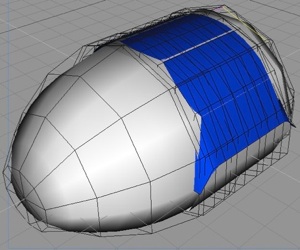Back to. . .

Mass Transit... One person at a time!
The InAmerica Solution:
A Battery-Operated Computer
The electron is essentially a battery-operated computer on wheels, that is large enough to fit two adults (and some luggage). It’s powered by batteries in the floor that continuously charge themselves as it travels along a road.
How can it do that? How can it charge itself without being plugged in?
Well, that’s where changing that mindset comes in. You see, in order for the electron to keep charging itself, you need to do something to the road. So before your town can sell all those buses and railcars to 3rd world countries, we have to do a little work on the road bed. Oh! Don’t worry. It’s not like building a right-of-way to lay track and have stations at every corner. We just have to embed a strip into the road.
But just think about all that foreign oil we don’t have to buy to keep these buses running all day and night. We still have to produce electricity in our power plants in order to charge the electron, but our consumption is much less and it becomes limited to vehicles that must travel long distances. The electron is not meant for long distances.
Preparing Our Roads For The electron
Your local municipality has to spend a little cash. It has to embed a strip into many of you streets. This is the biggest cost associated with the electron, but it’s a tiny fraction of what you would need for rail and probably comparable to building all those bus stops at every corner.
The difference is that, unlike a rail system, that is useless until the entire system is completed, the embedded roadways can allow limited service in the beginning which will expand as new roadways are embedded with charging strips.
In fact, it’s likely that the first strips will be embedded in roads that are always well-traveled. So the electron becomes useful almost from day one. Remember, not all roads require strips. We haven’t figured out the ratio yet, but, generally speaking, if the major streets have charging strips, the the electron can wander off the strip to bring you right up to your destination or use streets with no strips to get to one that has a strip. The electron will know how much power it has and if it can travel far enough to get back to a strip. As the strips become more prevalent, the electron will be able to cover every location on the grid.
How Does The Strip Work?





Since the electron is equipped with sensors of all types, its computer will direct it to the nearest convenient road that is equipped with a strip. Once it is traveling along the road with the strip, its sensors will ensure the electron is traveling directly above the strip so it will receive the maximum charge.
In the event conditions on the road and the electron’s current charge requires it to divert from the most efficient route to your destination, it will credit the difference to your transit card. This way you are receiving the most cost-effective way to travel from one place to another.
What About Personal Electric Cars
Hopefully, once the pioneer cities and towns show us the way to a Demand Response Mass Transit System, it will inspire auto manufacturers to offer an accessory by equipping your electric or hybrid vehicle with a strip, so that it can charge itself as it drives along ion the city. The immediate benefit would be to extend the driving range of an all-electric vehicle to the point that most drivers will have use for it.
Think of it! It’s clean! It’s inexpensive! and it works! While not perfectly suited to the electron format, there are already prototypes that have been developed by auto manufacturers that will work.
Why is InAmerica working on this InNovation? Because it requires change and we are masters of change. We are working to assemble the team that will take the electron from the laboratory and put it in your city.
HOW DOES IT WORK?


Copyright © 2010-12 InAmerica, Inc. All rights reserved.













